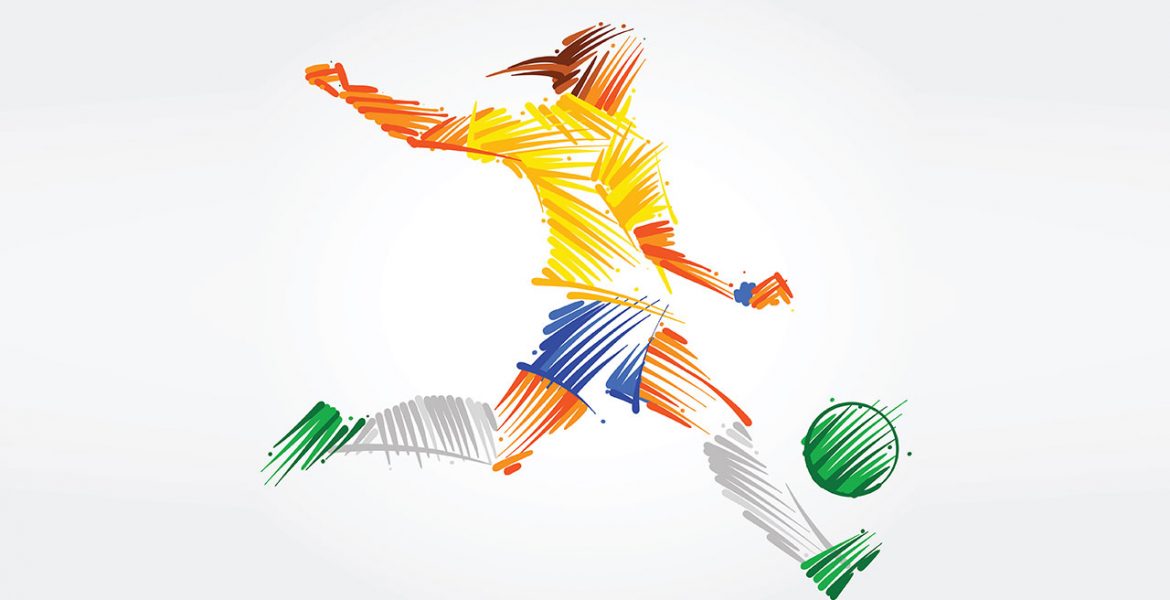The sports entertainment industry is really broadening its horizons lately — and it’s very exciting indeed. Not only is esports attracting a legion of younger fans across the world, women’s sports are also surging in popularity like never before.
Traditionally, male-dominated sports have taken center field, with female-led sports often relegated to the sidelines. They’ve faced a long uphill battle to get the attention they equally deserve. However it’s now time for women’s sports to take the spotlight. There has been a noticeable spike in interest in women’s sports recently — particularly women’s football. And brands are taking heed.
Big names like Visa and Nike are seeing the value of investing in women’s soccer. Visa became the first ever UEFA sponsor dedicated to women’s football; a deal that will run until 2025. And for the first time, Nike has worked with professional female athletes to design soccer kits tailor made for them so they no longer have to wear versions of the t-shirts designed for the men’s side. The new kit will make its debut at this year’s Women’s World Cup (WWC), which kicks off in France on 7th June.
Nike has gone a step further and declared 2019 as the “tipping point” for women’s soccer. The brand’s “Dream Crazier” campaign is a prime example of celebrating female athletes who have broken down barriers against incredible odds.
With the WWC tipped to attract around one billion viewers, there’s plenty of opportunities for brands and marketers to tap into. In the run up to the WWC, we decided to dig into this audience to understand who this group is and what really matters to them.
It’s all about balance
Many might assume that because this is a women’s competition, the fan base consists mainly of females. Well, our data tells a different story.
The gender breakdown for the WWC actually skews very slightly male, but in general, it’s fairly balanced between men (53%) and women (47%).
We can see some variation when we break it down by region. In Europe, almost two-thirds of WWC watchers are male, and in no region does this gender breakdown lean towards females to a significant extent.
The majority (54%) of the WWC audience are young, aged between 16-34. Age has a noticeable impact on the gender split in the WWC audience too. Among younger age groups, the audience profile tends to skew toward females. For example, 53% of WWC watchers aged 16-24 are female compared to just 34% of those aged 55-64.
Attendance at women’s games has reached an all-time high this year. In March, over 60,700 people watched the Barcelona and Atletico Madrid match at Atletico’s Wanda Metropolitano stadium, which broke the record for a domestic women’s football match in Europe.
Growing media attention has also played a big role in driving greater awareness. The BBC is the official broadcasting partner for the WWC and will air the matches during prime time slots. The company is also heavily promoting the competition with its “Change the Game” campaign, which shines a light on women’s sport in a powerful way.
Given that this audience is generally quite diverse, cross-gender marketing campaigns are important when it comes to driving viewing numbers, awareness and participation even further. The WWC audience is also considered relatively affluent too, making this group even more appealing for brands and marketers to reach.
Equality is crucial
Conversations about women’s sports often include comparisons to men’s sports, especially when it comes to money. Brands are still investing less in women’s games than men’s games and the winners of the WWC will also receive less than the winners of the men’s world cup. Even though FIFA has promised to raise the prize money for the WWC, it’s still less than what male players receive. It’s a step in the right direction, but there’s still a way to go before the gender pay gap is truly addressed.
83% of the WWC audience believe we should all strive for equality; they’re 12% more likely than the average internet user to say this. This group also displays a strong interest in social/political issues. Female fans care the most about equality (87%), but perhaps more interestingly a large portion of male fans are also passionate about it too (79%), showing that equality is key regardless of gender. Lucozade is just one example of a brand that’s tackling equality by promising equal advertising for the English women’s soccer team.
We know that equality matters to this group, and it presents an opportunity for brands to be a part of a meaningful, relevant conversation, to empower consumers and to truly make a difference. There’s no time to wait on the sidelines, the time is now.

